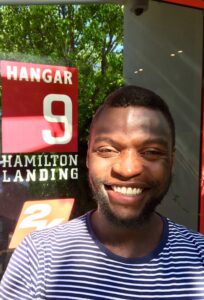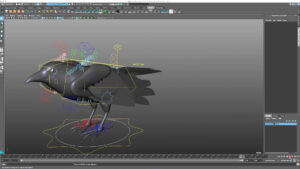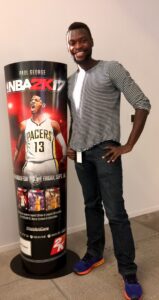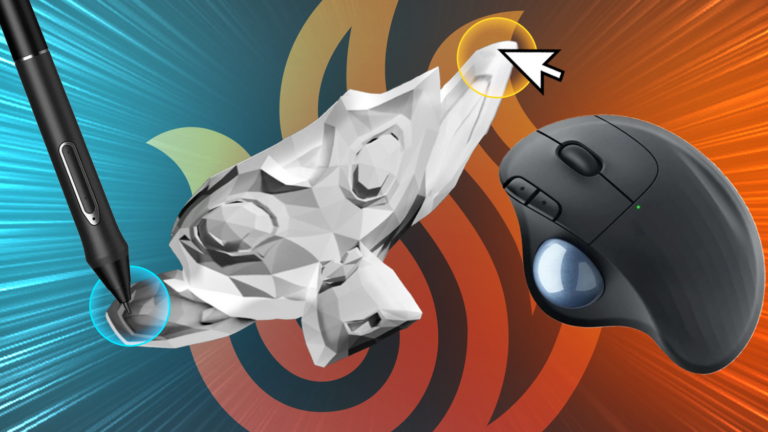Sometimes a career path can take you unexpected places, and you end up where you didn’t expect. Take USV alum Bugi Kaigwa, whose journey took him from finance to graphics to animation to the technical side of video games working on the NBA 2K series as a character rigger and technical artist.
Bugi recently spoke with USA Today about his character rigger career path, and what people hoping to break into the video game industry or other creative jobs can take away from the lessons he’s learned along the way – and how USV was a critical step to where he is now.
These questions originally appeared in USA Today:

What’s your coffee order?
Usually, being from Kenya, I am a tea guy — usually just a ginger tea. I also love a sinful vanilla latte.
What’s the coolest thing you’ve ever done?
My travels to South Africa, my travel in general. Travel can make you such a better person, it can expand the way you think on so many different things.
Also, working on NBA 2k has been one of the coolest things I’ve done in my entire life. The look on people’s faces when you tell them you work on 2K is the coolest thing.
Who’s your mentor?
My parents. I think they’ve been such an influence in my life and to the person I’ve become. My mother taught me how to work hard in achieving what I want, and she’s opened so many doors for me just by showing me an example of what hard work can be. My dad is an amazing, amazing artist and I look up to him. I hope one day to be as half as good as he is.
Professionally, the dean of our school, Jerome Solomon. I met him when I joined USV, and got to know him. His work in the industry is amazing, and he’s worked at a lot of studios that I’ve dreamt of working on. Very early on I developed an admiration for him, and he’s always guided me on a lot, always been there for me when I have concerns about the industry or question. He’s always guided me in the right direction.
What does your character rigger career path look like, from college to Visual Concepts?
My career path is very nontraditional. My first degree is in finance, and that’s when I started teaching myself how to do graphics on the computer, and while I was doing that I was developing skills. By the time I left I was ready to start freelancing, and I did a lot of graphics and TV projects.
 My heart, though, was in the animation; I love video games, and I came to California and enrolled in USV. I started in animated but ended up going the technical route. I feel like I started my career at USV because I got to work on the game studio projects, was an elite artist on those, and was on projects as the technical director. I currently really love where I am, but I want to not get too comfortable, so I hope to one day be able to tell my own stories and shepherd my own experiences to new audiences.
My heart, though, was in the animation; I love video games, and I came to California and enrolled in USV. I started in animated but ended up going the technical route. I feel like I started my career at USV because I got to work on the game studio projects, was an elite artist on those, and was on projects as the technical director. I currently really love where I am, but I want to not get too comfortable, so I hope to one day be able to tell my own stories and shepherd my own experiences to new audiences.
What does a day at work look like for you?
We get to work with a lot of different departments! I start my day a little later than most … Not a morning person. I get into work at about 10, and then usually it’s working on emails from the morning and day before, and a lot of putting out fires. That’s kind of what the job entails, a lot of different departments and trying to support them. There are always problems that come along, so that’s where most of my day is spent. We also do a lot of tool development to assist artists, which is a lot of fun, and the character work in the departments and I end my day around 7, 7:30.
What’s the general process behind designing a video game?
Before I joined Visual Concepts, I had no clue just how many things everyone does. Every artist is such is a small cog in a very big wheel. There’s a lot that goes into putting the pipeline together, and then a lot of building it to become a working pipeline where everyone can contribute. Video game development is about having many, many, many people come together towards a common goal, working little by little.
What’s your favorite part about your job?
I would say that my most favorite part — which is also the most challenging part — is problem solving. Every problem is different, and that’s what drew me to the technical direction, because I feel like I gravitate towards things that you have to use different skills to try and figure out.
I really liked math more than the average student, and that prepares your brain for this kind of work. I enjoy that, and the satisfaction you feel. If I compare myself to even six months ago with now, just the way I navigate myself around different problems has really changed. It’s like a muscle developing.
What’s the biggest lesson you’ve learned professionally?
It is essential that if you ever want to become great at what you do that you stay hungry for knowledge and to do better. I’ve never felt good enough, and that sounds negative, but the sense that you could always do better then what you’re doing now is how you grow.

What’s the best advice you’ve ever received?
The best advice I received was from Jerome Solomon. I had come in to do animation, and two weeks in I was in a programming class and approached him to pick his brain. I told him I was concerned because I was hearing a lot of things about people not getting hired in animation, and that it was really risky. He asked me if I felt like I had any technical experience, and yes, because I enjoyed the art and the math. He told me I should go the technical route, and I did. With the amount of people in animation you just had to be better than the best. There’s not many people in tech in the industry because it’s so rare — not a lot of people like that kind of work.
How would you describe your job as a character rigger?
Sort of in between art and engineering, with a leg in both worlds. It’s more specialized and it involves a lot of taking the things that the artists create and making them usable for the animators. It’s kind of an in-between role. So we take the character models and put in skeletons and make the rigs so that they can be made animate-able, and once they’re done we help back to build them into the game.
What advice would you give someone who wants to follow in your footsteps?
Stay hungry. You have to feel an intense drive that you need to be successful, and most have that in spades. I don’t know if you can develop it, because it takes a lot of hours to get to be that kind of successful in this industry. Do some self-reflection — even if you have a bit of that drive, you can develop it and steer it in the right direction. It’s all about the work, it’s all about the grind.


